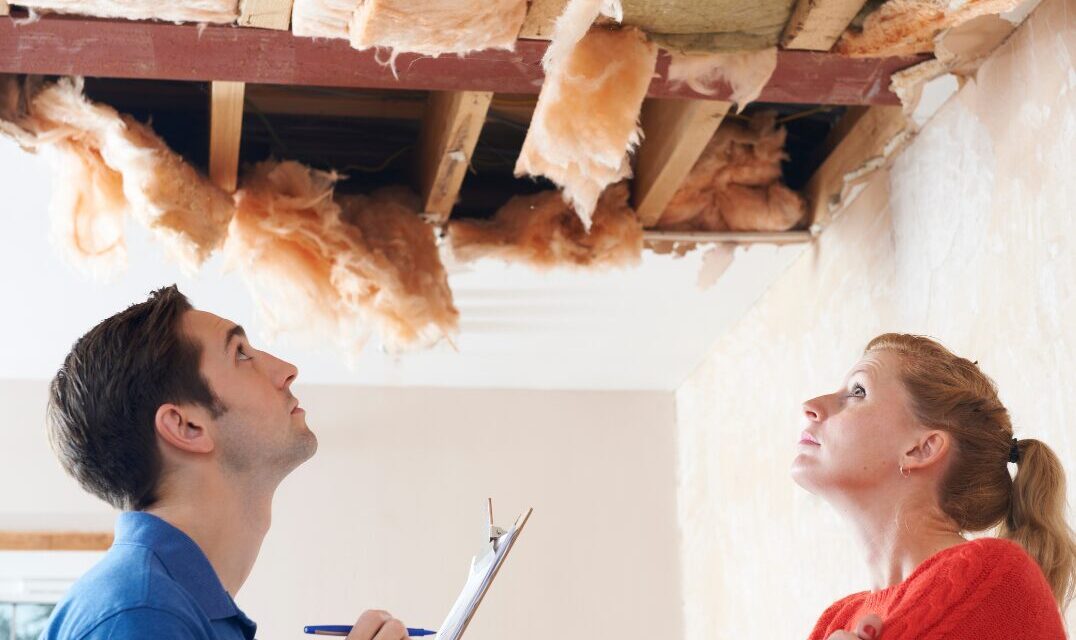Home damage assessment is an actual job. However, many average homeowners have to do it at some point when filing an insurance claim. Being ill-prepared can deprive you of the necessary funds to fix your house. Understand what constitutes insurable home damage, how much to expect and how to go about it.
What Are the Most Common Types of Home Insurance Claims?
Homeowners insurance claims usually involve losses caused by harsh weather. If you experience hail, strong winds or heavy rain, you must inspect your house to identify causes for concern when it’s safe.
Start with your home exterior since it bears the brunt of the elements. Look for fallen shingles, drooping roof sections, siding dents, shattered window glass and missing fence slats. Structures near trees are at higher risk of destruction even after the severe weather passes.
Then, walk around your interior. Pay attention to signs of foundation damage. Drywall cracks, gaps between windows and walls, sloping uneven floors and sticking doors are red flags. Fixed structures in the living room, kitchen, dining area, bathrooms and bedrooms, such as shelves and cabinets, that separate from the wall indicate your home’s foundation is shot.
Regarding water intrusion, not all indicators are as self-evident as ponding and wet belongings. Sagging ceilings, dark surface stains and musty odors suggest water seeped into your house. A compromised roof is a common rainwater entry point. Go to your attic and search for evidence.
Don’t forget about your garage. Severe weather and its consequences, such as lightning and flooding, can impact this space just as severely as your other rooms. Watch out for the same clues when inspecting this area.
Garages are affected by natural disasters, but they’re also common vandalism targets. Criminals may leave your garage doors in worse shape and steal your valuables in storage after a burglary, so look closely at them when investigating what happened.
What Is the Most Common Damage to Your Home That Insurance Does Not Cover?
Standard homeowners insurance policies rarely cover floods. This peril merits a separate coverage and an additional premium.
Termite damage is another loss most insurance carriers refuse to cover, for it’s preventable. Some may agree to include it in a standard policy, though.
Moreover, your insurer can legitimately give you a thumbs down even when your policy covers the loss you claim. Wear and tear, misuse and negligence are grounds for denial.
Standard homeowners insurance policies generally exclude accidental damage, too. You need different coverage to protect you financially from mishaps.
Is It Worth Claiming on Home Insurance?
Damage can be worth claiming on homeowners insurance when the cost exceeds your deductible. Foot the whole bill when the amount is less than the percentage of the deduction from a claim payment.
Filing a claim can safeguard you financially but comes with a repercussion — a premium hike. Customers with a claims history are always riskier than those with none in the eyes of insurers. Weigh the pros and cons of your action to determine what makes sense for your situation.
8 Tips for Assessing Home Damage for Insurance Claims
The claims process has little room for error. One mistake can spell the difference between approval and denial or receiving an unreasonable settlement offer and getting paid sufficiently. Follow these eight tips to come out the other side successfully.
1. Put Safety First
Limit yourself to a cursory inspection. Climbing a ladder without proper gear and know-how endangers you and worsens a stressful situation.
2. Review Your Policy
Check your homeowners insurance policy’s contents to refresh your memory. Reminding yourself of your percentage deductible, covered losses, limitations and exclusions can help you gauge whether filing a claim is worth it.
Furthermore, reading your policy lets you know whether it considers depreciation. You’ll get a settlement according to the affected items’ current estimated value if you have actual cash value coverage. On the other hand, if you have a replacement cost value policy — like an HO-3 or an HO-5 — you’ll receive an offer reflecting how much it costs to replace the affected items even though they’ve aged or worn down.
3. Document Your Findings
Take pictures and videos of the damage. These visuals serve as evidence to back up your claim. Create an inventory of the covered items you lost and describe them with as many details as possible. Categorizing them and noting their preexisting damage streamline the whole claims process.
4. Stop the Bleeding
Take steps to prevent further damage. Letting standing water alone or not calling an emergency roofer after a tree falls on your house can jeopardize your claim. Your insurer may interpret your inaction as neglect and use your culpability to justify paying you less.
5. Get an Estimate
Guesstimating repair and replacement costs personally can unreasonably raise your expectations. Unless you’re a construction professional, you can’t just pull any number out of thin air. Instead, request quotes from competent contractors to better understand the damage’s nature and have credible figures to inform your subsequent decisions.
6. Contact Your Insurer
Notify your insurance company about the damage and fill out all required claims forms as soon as possible. Waste no time to allow the other party to get the ball rolling immediately. Putting it off can color the investigation and result in an inaccurate settlement.
7. Deal With the Claims Adjuster Wisely
Your insurer will send a claims adjuster to inspect the damage, decide whether your claim has merit and determine how much the company should pay you. This professional represents your insurance carrier, so anything detrimental you say to them can backfire on you.
Refrain from admitting fault, speculating about what happened, and making recorded or signed statements are common mistakes when dealing with a claims adjuster. Transparency and collaboration are crucial, but sharing more information than necessary is a line you shouldn’t cross.
Let the damage speak for itself. Present supporting documents — such as roof inspection reports and air conditioner maintenance invoices — to demonstrate your history of responsibility.
8. Negotiate for an Adequate Settlement
If you’re unhappy with the offer, reject it and return to the negotiating table. Know your rights and speak with your insurance company’s claims manager. If unsuccessful, hire a public adjuster to negotiate on your behalf and look after your best interests in the claims settlement process.
Nail the Homeowners Insurance Claims Process
Filing an insurance claim is something most homeowners wish they never do and all insurers hope never to hear. If you find yourself in this trying situation, do what you can to avoid pitfalls and get the highest settlement you deserve.





















